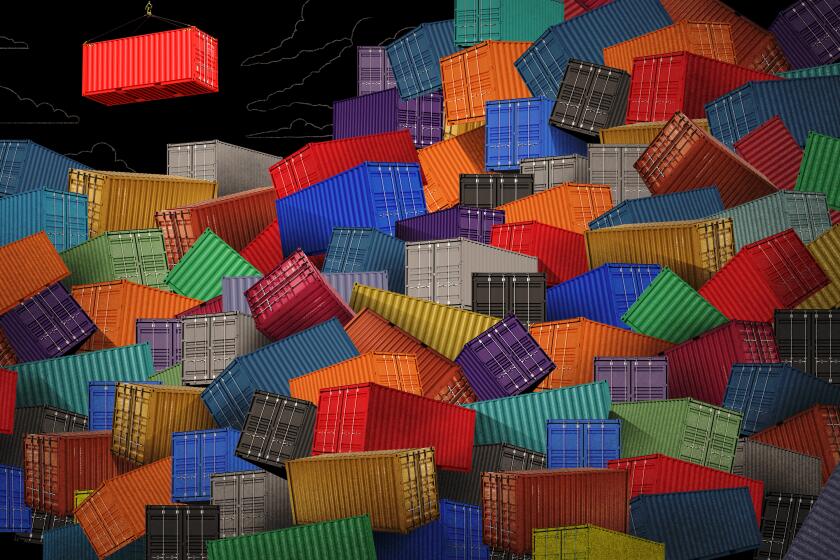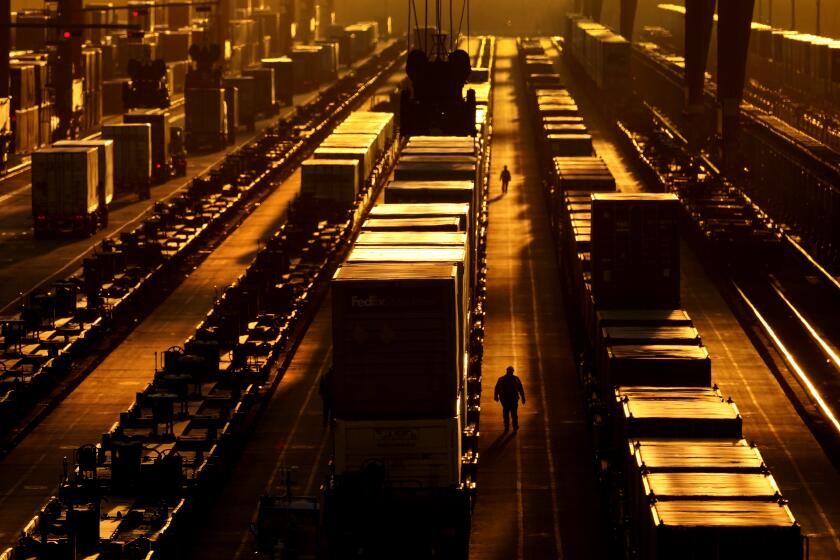How one toy store found a way to avoid a supply chain nightmare before Christmas
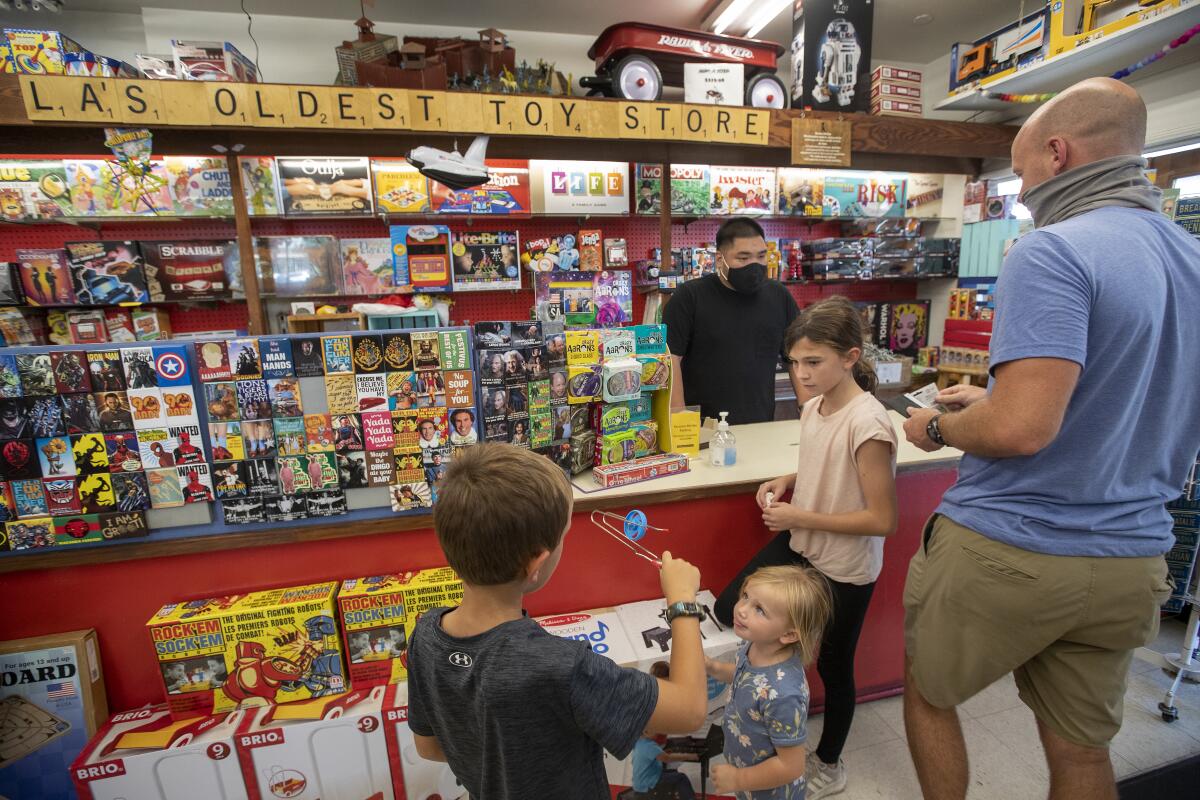
If everyone’s holiday gifts are stuck on a ship somewhere, then why isn’t toy store owner Don Kipper worried?
Kipper and daughter Lily run Kip’s Toyland, billed as Los Angeles’ oldest toy store, and Kipper the elder contends he really isn’t fretting over massive global supply chain problems that have left both small merchants and big-box retailers frantic about whether they will receive all the merchandise they need for the vitally important holiday shopping season.
The Kippers realized months ago that the classic toys carried by the family operation were becoming harder to get and taking longer to arrive. The buying department — that’s Lily — kicked into overdrive, well before the full magnitude of the supply chain mess became apparent, ordering much more than usual in case products were held up in transit.
“It became clear to us that this was going to be an issue,” said Kipper, whose father, Irvin, opened the store in 1945 after he was released from a World War II prisoner of war camp and was looking for a fun line of work. “You have to do whatever it takes to get the merchandise to stay in business.”
Now it’s a waiting game to see if they stockpiled enough Lincoln Logs, Pick-Up Sticks, dolls, board games and the like. Pretty much everything in the old-fashioned store, located in the landmark Original Farmers Market since 1956, travels by cargo ship from Asia, Kipper said.
Supply chain bottlenecks are delaying products, boosting prices, hurting businesses and slowing economic growth to such an extent that President Biden stepped in Wednesday with an announcement that the Port of Los Angeles would operate around the clock to ease the logistical pileup, similar to a pilot effort started recently by the neighboring Long Beach port.
A global supply chain breakdown has resulted in gridlock at the ports of Los Angeles and Long Beach and beyond.
The toy industry is particularly susceptible to shipping delays because 85% of the 3 billion toys sold each year in the United States come from China, said Ed Desmond, executive vice president for external affairs at the Toy Industry Assn.
“So you can see the dependence and reliance our industry has to get their products over here and onto the shelves and stores here,” Desmond said.
But it’s not just toys. A long list of items destined for factories, retail shelves and consumer doorsteps have been snagged, including lumber, cars, furniture, electronics, bicycles, clothing and shoes.
The supply chain has been disrupted by many factors: the pandemic, booming consumer demand, raging storms, shortages of cargo ships and containers as well as a shortage of people willing to drive trucks or stock warehouse and store shelves for the wages offered. In China and other Asian countries, COVID-19 outbreaks have periodically closed factories and seaport terminals.
The worst traffic jam in Southern California sits offshore from the ports of Los Angeles and Long Beach, the nation’s two largest cargo container seaports, as dozens of ships await space at docks to unload. Once the ships are unloaded, cargo containers also have been languishing for an unprecedented amount of time waiting to be put on a truck or train, said Gene Seroka, executive director of the Port of Los Angeles.
The ports’ congestion will benefit immensely from the 24-hour operations, but the new initiatives will take time to implement and the mountains of cargo boxes will take time to shrink, port officials have said.
COVID-19 led to logjams at ports and borders that continue to ripple through many parts of our economy and everyday life. When will it get better?
The logjam isn’t just a local problem.
A backup at Britain’s busiest commercial port is raising concerns about shortages of popular item during the holidays there. Record numbers of ships also sit at anchor off the ports of New York-New Jersey and Savannah, Ga., which rank third and fourth among U.S. seaports by cargo container traffic.
These are vessels that are sometimes longer than the height of Los Angeles’ tallest skyscraper, the 1,100-foot Wilshire Grand Center. Getting them to port requires delicate choreography involving harbor pilots and tugboats to inch the ships slowly through the water.
The biggest can carry the equivalent of nearly 24,000 20-foot cargo containers. (Although the more common size for the steel boxes these days is 40 feet long, the industry still uses the historic measure.) If a ship that size were to disgorge all its containers at a single port, they would fill a freight train 44 miles long, Monaco-based shipping company Costamare Inc. estimates.
Some retailers and package carriers have urged consumers to buy and ship holiday gifts early, or they risk finding that a must-have gift is out of stock or won’t arrive in time.
James Zahn, deputy editor of the Toy Book, a leading trade publication for the toy industry, advised that toy shoppers “should check out your local retailers. Don’t just be thinking of the mass retailers, you’ve got to be checking out some of these independent toy stores.”
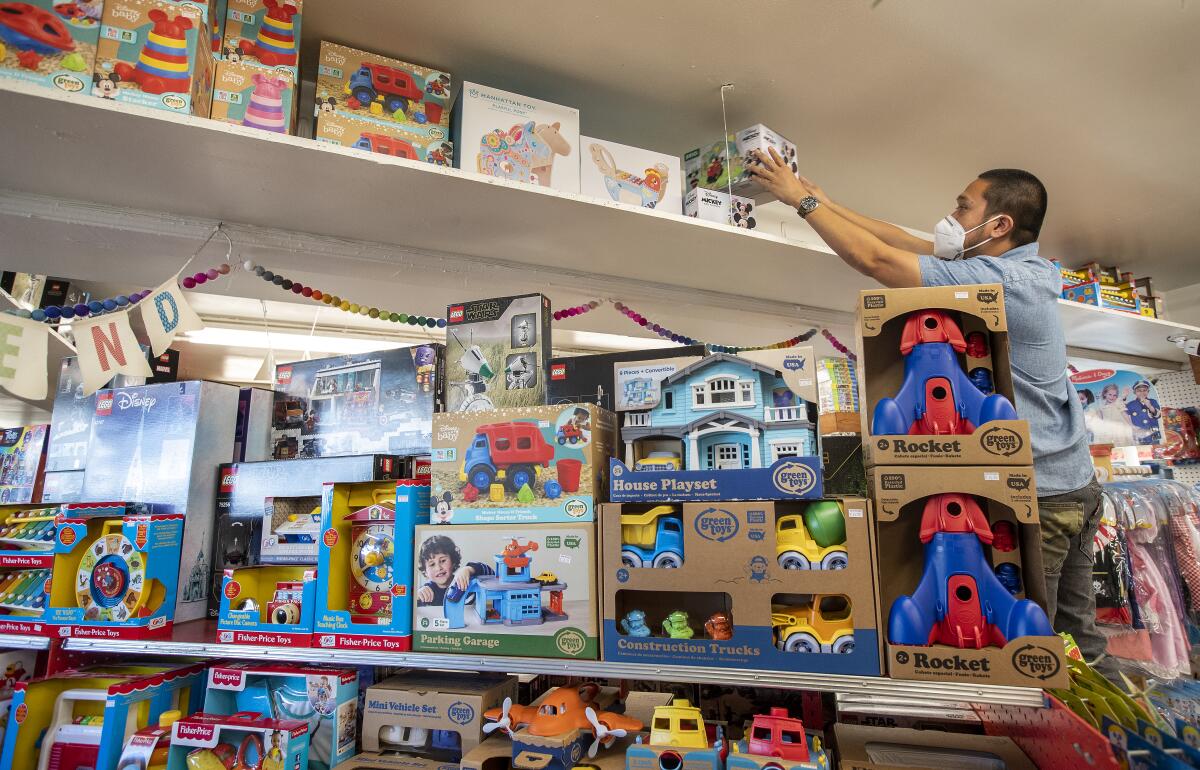
That is what the Kipper family is counting on. Kip’s Toyland location has always enjoyed substantial foot traffic from L.A. residents and tourists drawn to the Original Farmers Market and then to the Grove shopping center next door, Kipper said.
Over the years, the store has weathered challenges such as nearby store openings by toy giants FAO Schwarz and Toys R Us, both gone now, and the rise of Amazon.com. Kip’s gave up its electronics business years ago because it was unable to compete on price with big-box retailers like Best Buy, but it sold the change as a positive choice, saying it wouldn’t sell any toys that required an electrical outlet.
“Retro,” “classic” and “vintage” are some of the words the Kippers use to describe their inventory of toys. It’s a compact storefront that offers a mix of old school and contemporary dolls, games, trains and other toys. The most expensive items are intricate Lego sets.
Kipper has been willing to quickly drop what wasn’t working well — such as the store’s effort at online sales — and focus on the things that were. Since the pandemic started, the store provided sanity and entertainment for adults and children stuck at home with little to do and no place to go.
“Puzzles. We could not get enough puzzles for the adults,” Kipper said, “and I think that was a common challenge for everyone. Parents love them. And there were people that would come and buy a number of them at a time. Similarly, things for kids that were popular were board games and, again, things like Legos that they wouldn’t get bored with in five minutes.”
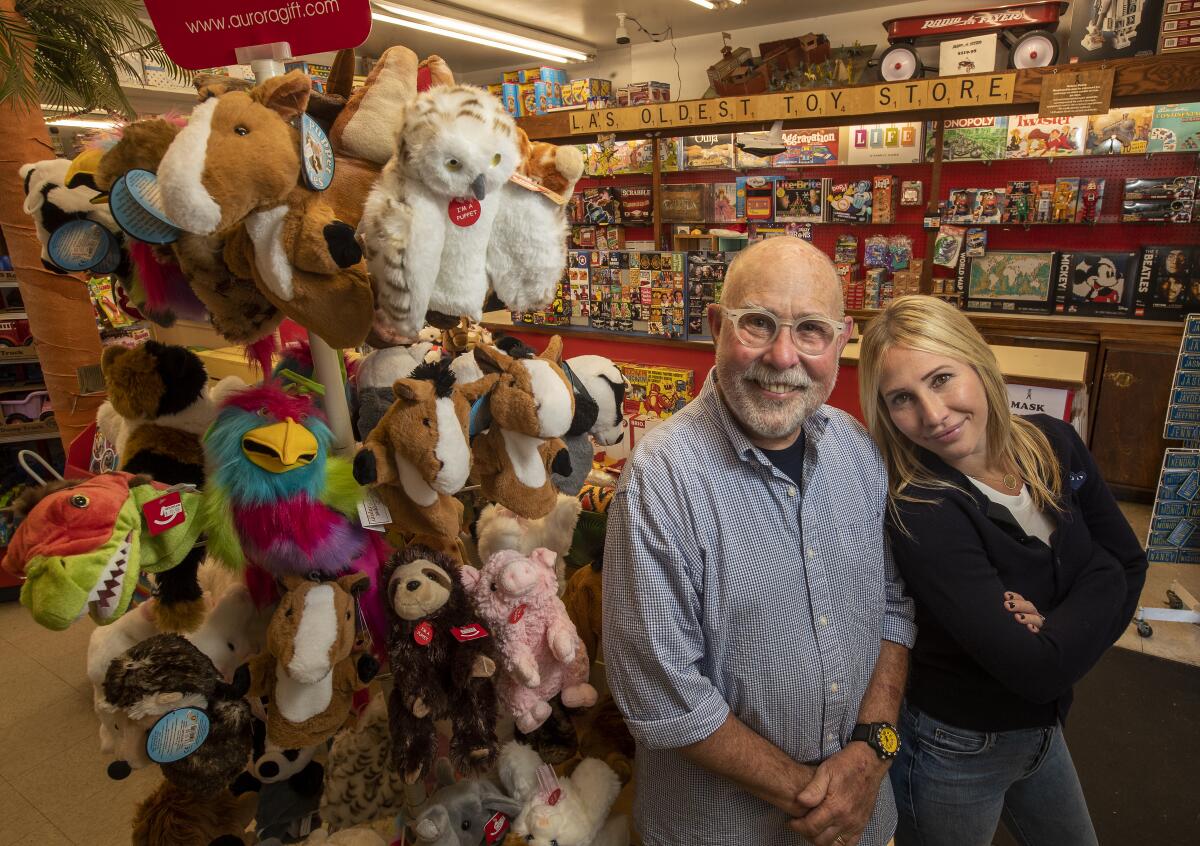
The Kippers are confident that their early buying spree will keep them well stocked for the holidays.
Lily Kipper, 33, said her 75-year-old dad told her, “‘You don’t have a budget, buy whatever you can.’ Every day, I was waking up to emails at 4 a.m. that said, ‘Sorry, this is on backorder,’ and, ‘Sorry, this is sold out,’ and, ‘You can’t get this.’”
Ultimately, the store acquired so much merchandise that staff members were telling her, “I don’t know where we’re going to store all of this stuff.”
She thinks the store is as ready as it can be.
“When the holidays come around and everyone else is sold out, we want people asking, ‘How is it that you still have this in stock?’” Kipper said. “Because we did our homework.”
More to Read
Inside the business of entertainment
The Wide Shot brings you news, analysis and insights on everything from streaming wars to production — and what it all means for the future.
You may occasionally receive promotional content from the Los Angeles Times.
